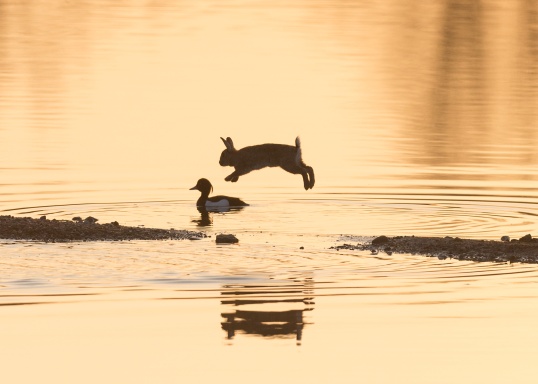 The flying rabbit © 2013
The flying rabbit © 2013
I thought it may be a good idea to write a short account of some of my favourite wildlife photographs taken at Tophill Low and provide a few technical details too. I know it’s Christmas and a selection of twelve may have been more seasonally appropriate but I’m a reluctant blogger—so ten it is.
Several people have kindly told me that they really admire, The flying rabbit. It certainly is one of my most memorable photographs and although one-or-two people have asked me if the image had been Photoshopped, it hasn’t. So here’s the story…
A few years ago, there used to be a continuous spit of land that spanned across the lagoon dividing the waters on each side. Sadly it disappeared a few years ago when the water level rose and countless cattle hooves loosened the soil. It was a magnificent feature and one that I exploited to the full. It was a popular shortcut for many mammals including roe deer, foxes and very occasionally, rabbits too.
Back in early May 2012, I was in my usual spot waiting for some activity. The evening sun was setting directly behind me providing a spot-lit effect to the landscape. I watched as a rabbit wandered along the shore towards the point where the two lagoons intersect. I was rather disappointed that it decided to wade rather than jump the small gap but I was happy to witness such a rare wildlife moment. I took a series of eight exposures and the image below was number six. At the time, I was using a x1.7 tele-converter on my 500mm Nikon lens with a D3S camera. I have since learned through experience that a 1.4 tele-converter gives the optimum sharpness for my camera and lens combination.
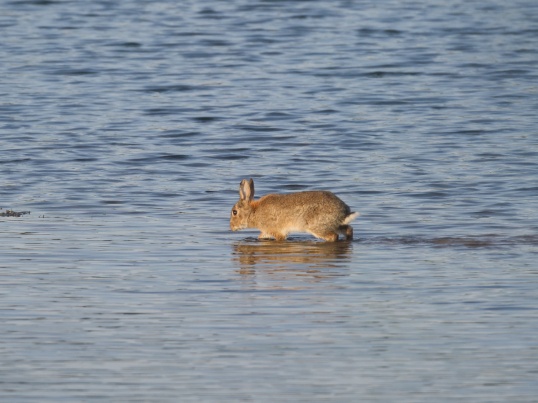 [for those interested in the exposure details, it was 1/800 second @ f9 ISO 1000]
[for those interested in the exposure details, it was 1/800 second @ f9 ISO 1000]
Exactly three weeks later, I was once again, enjoying the evening sunshine when another rabbit approached the water from the opposite direction. In anticipation, I quickly checked my shutter speed (I normally use aperture priority mode) so I bumped-up the ISO to give me a nice healthy shutter speed of 1/2000 second. Hooray! It jumped and more importantly, my photographs were reasonably sharp and correctly exposed. Here are two images from the series, taken at 10 f.p.s.
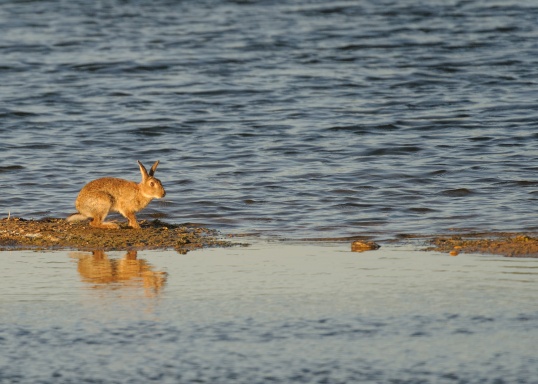
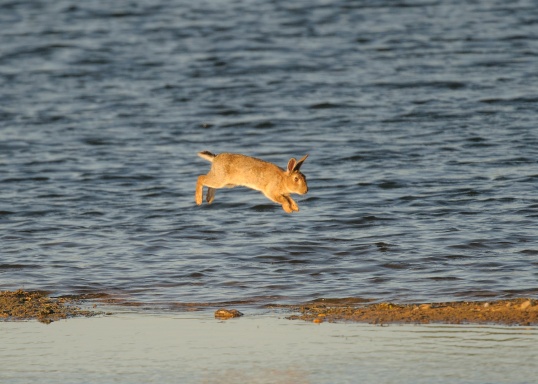
I was pleased with my photographs and never thought there would ever be a repeat. A year went by and I was sat, bleary-eyed, waiting for sunrise. It was just after six and the sky was clear but the dawn-light was blinding. This was challenging photography, even though I was using RAW—too much exposure and the highlights would be irretrievable—too little and I would end up with a silhouette. The ‘gods’ must have been with me that morning as I judged the exposure perfectly.
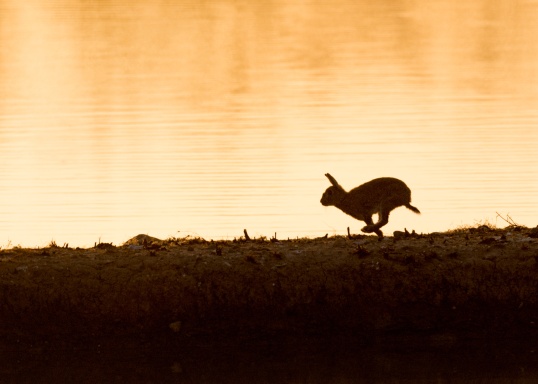
Out of nowhere, another Easter bunny came running at pace along the spit of land. I checked my settings carefully. I’d already changed the colour balance on my camera to ‘warm light’ which to my eye, gave an accurate representation of the dawn light and because I was photographing into the sun, my shutter speed was an astronomic 1/6400 second.
Wow! Another actor entered the scene, stage-left. A beautiful male tufted duck. Would the cow jump over the moon, perhaps? I followed the action using a short-burst and back-button focusing. Several frames later I relaxed. As I checked the sequence of images on the LCD I was relieved to find that they were all properly exposed and delighted to see that there was one frame where the duck’s head was not obscured. That was an unexpected bonus.

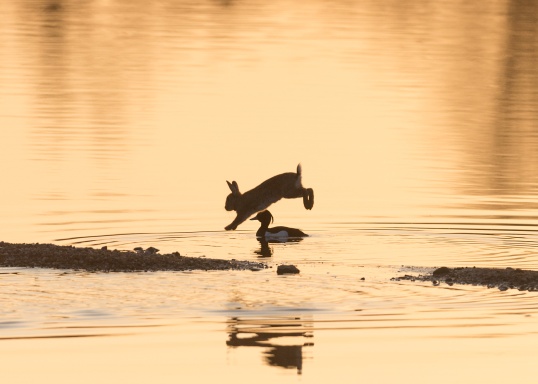
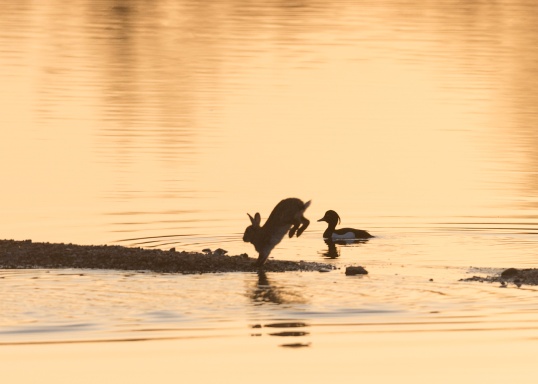
So my thanks to all those rabbits who took part in this, the first of my History Lessons blog entries. As usual, please ask any questions and/or give feedback on my post.
A Merry Christmas to you all!
—Tony Mclean 2017
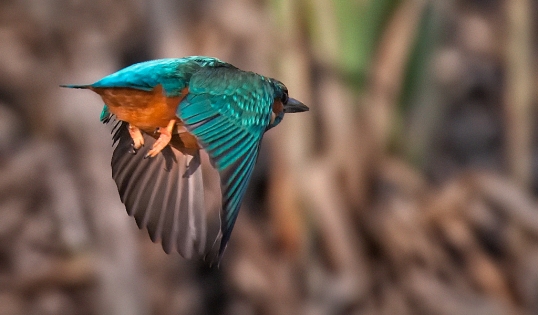
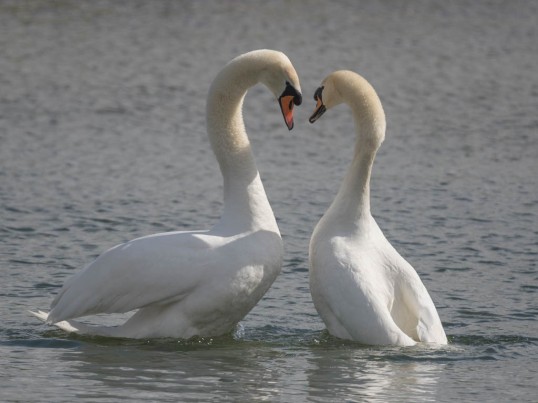
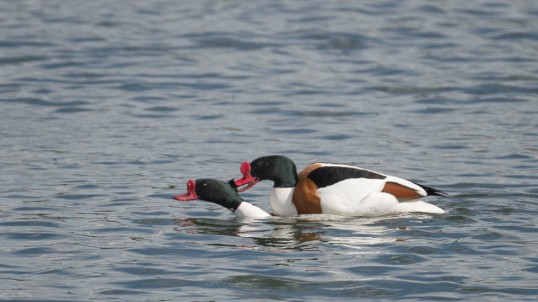
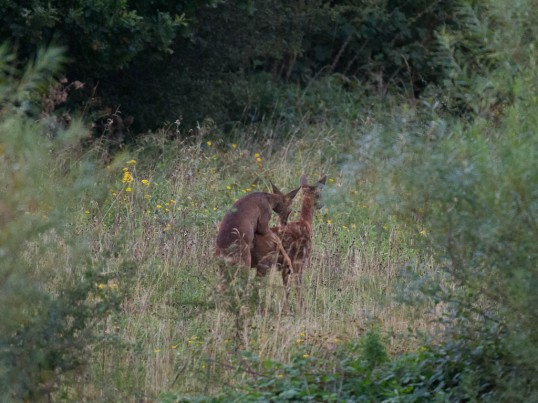
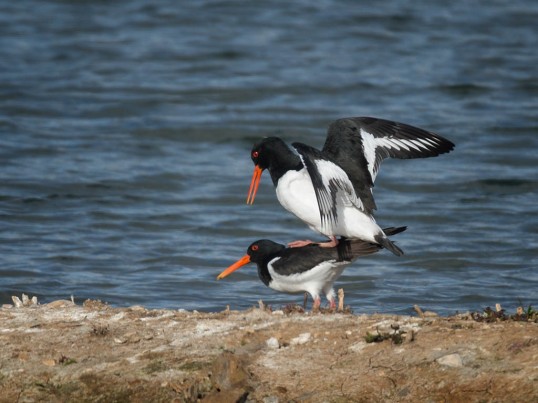
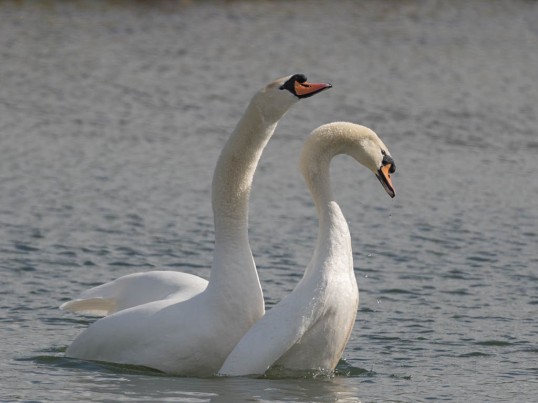
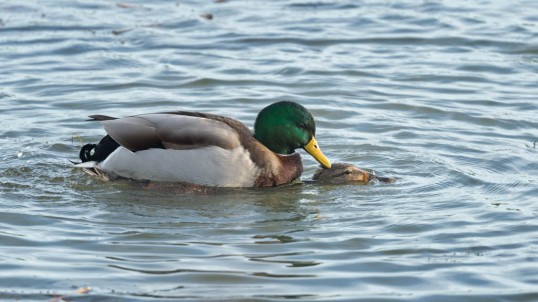
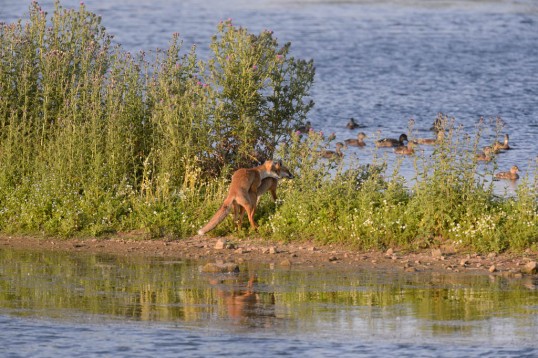
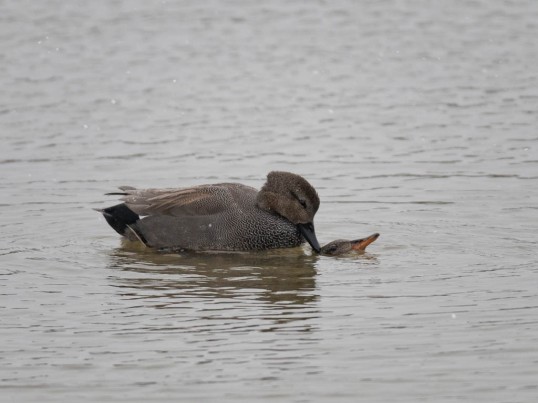
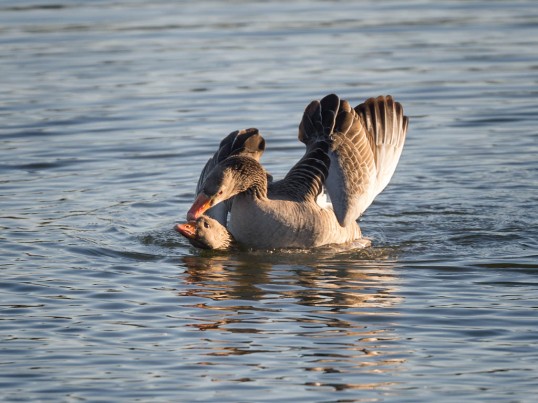
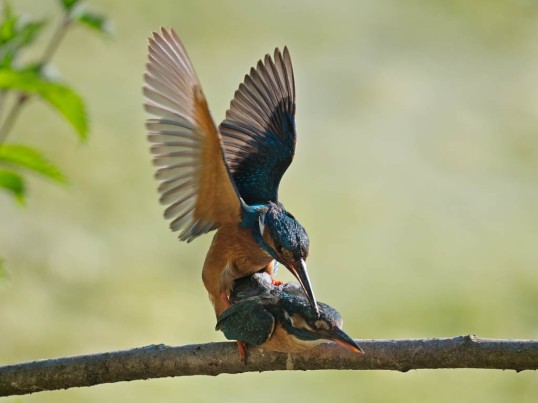
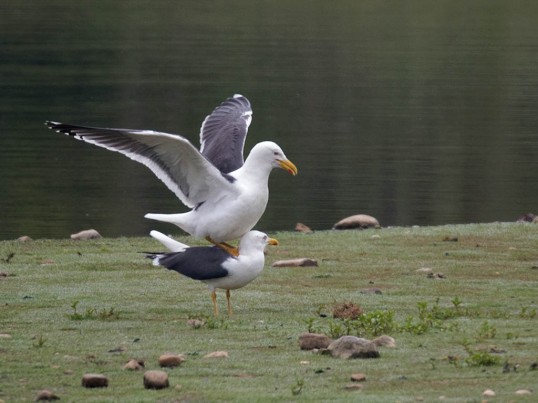
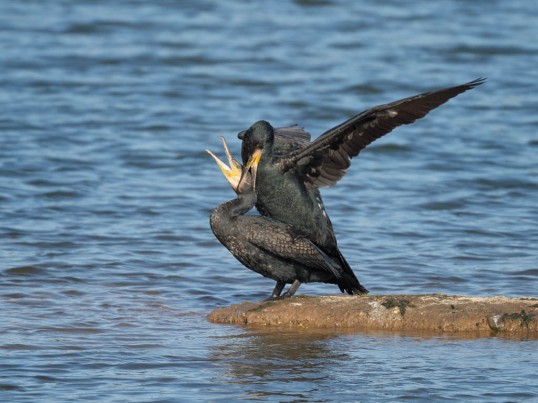
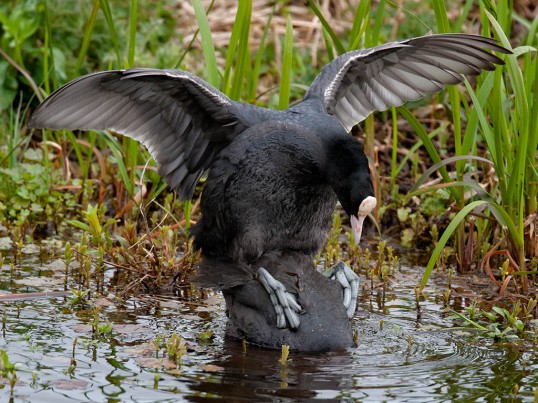
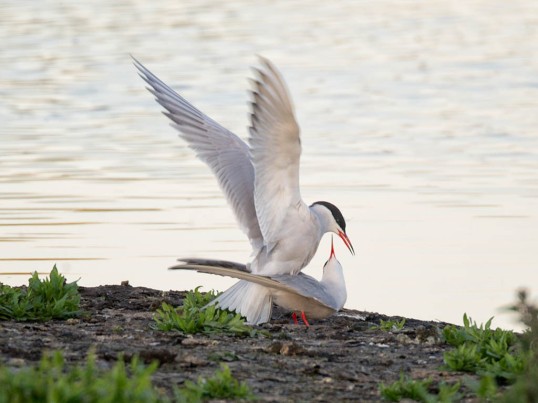
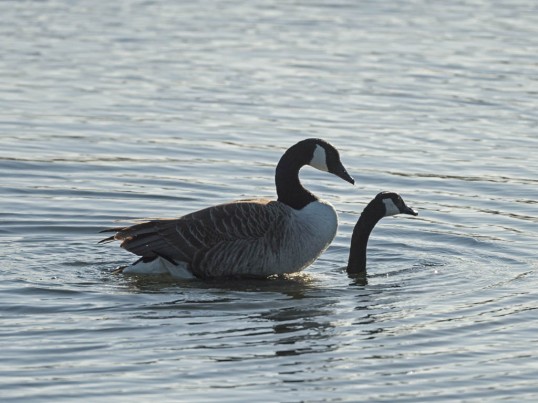
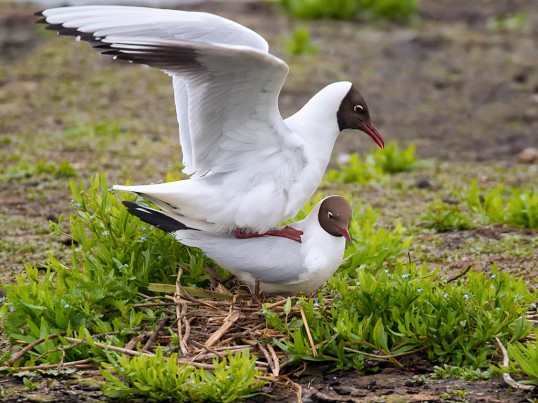
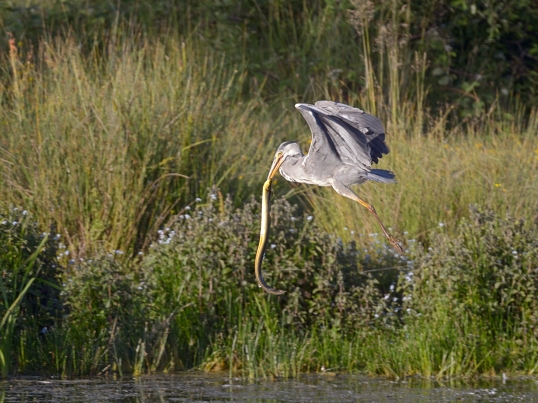 Grey Heron with Eel – 14 July 2013 – [500 mm + 1.7 T.C. 1/800 sec f 6.3 ISO 320]
Grey Heron with Eel – 14 July 2013 – [500 mm + 1.7 T.C. 1/800 sec f 6.3 ISO 320]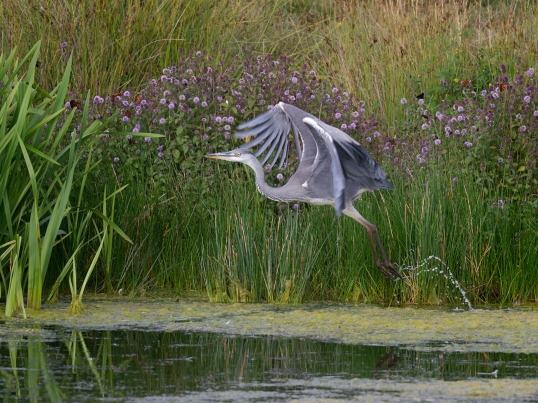
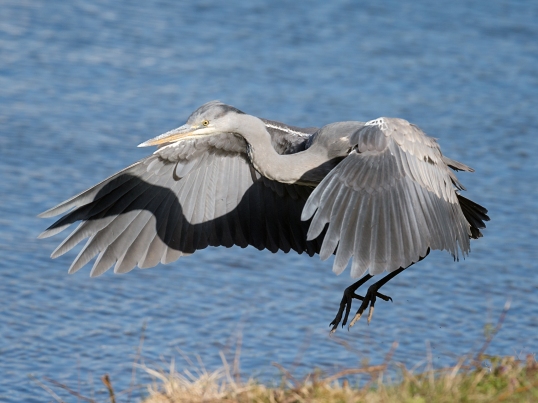
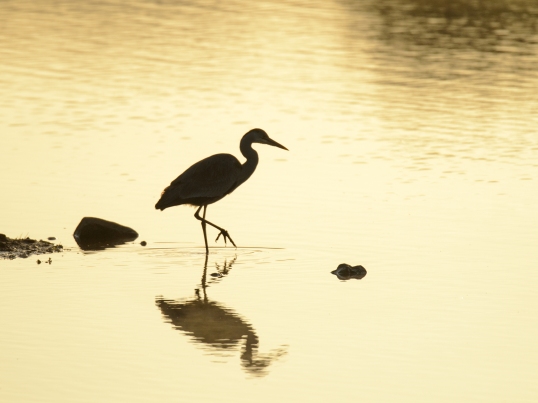
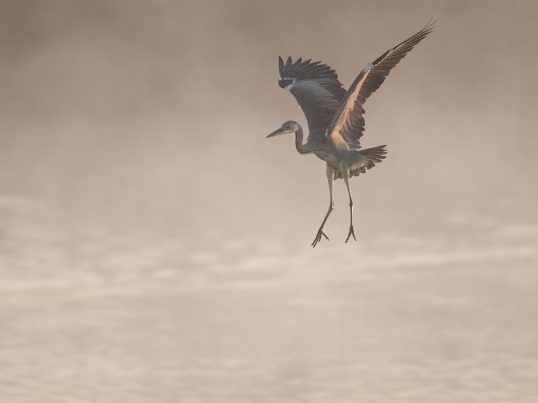
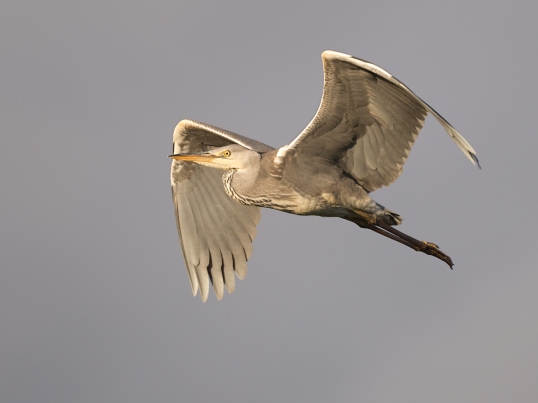
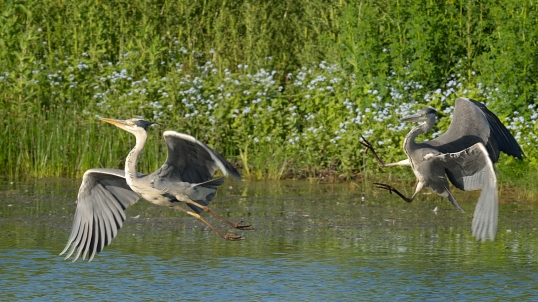
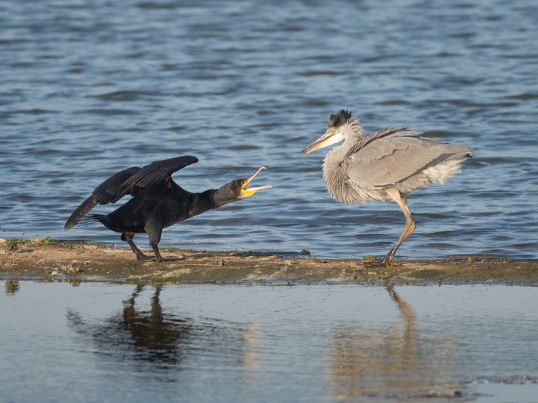
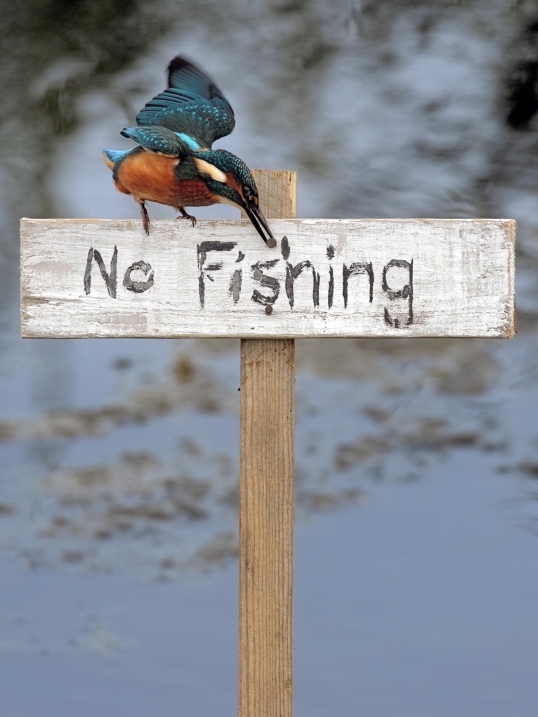 ‘No Fishing’ – 15 June 2013 – [1/800 second f 8 IS0 1600]
‘No Fishing’ – 15 June 2013 – [1/800 second f 8 IS0 1600]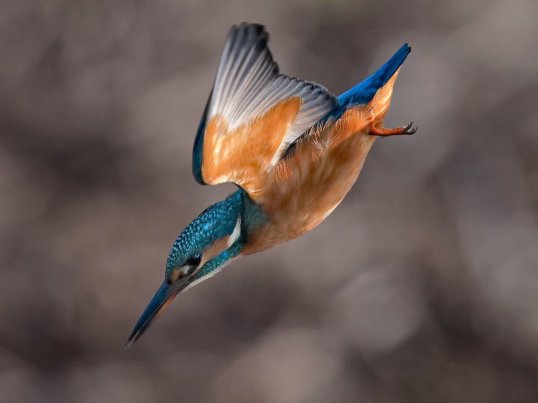
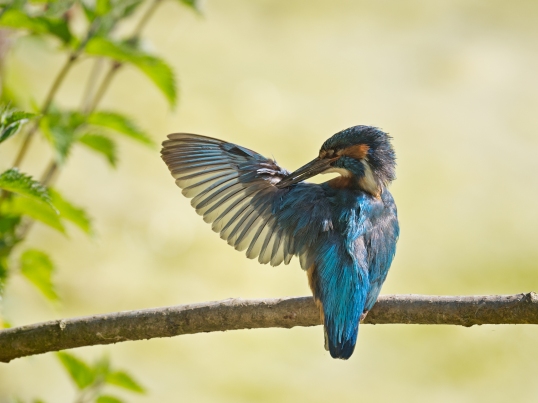
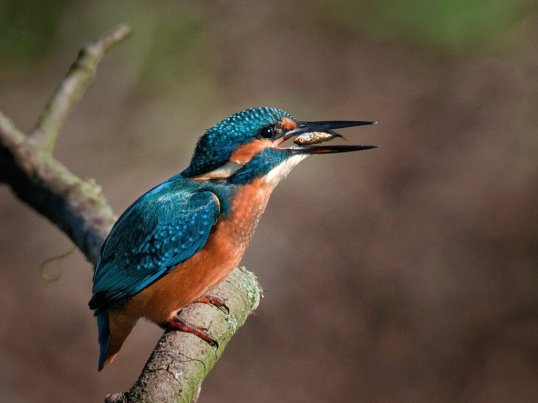
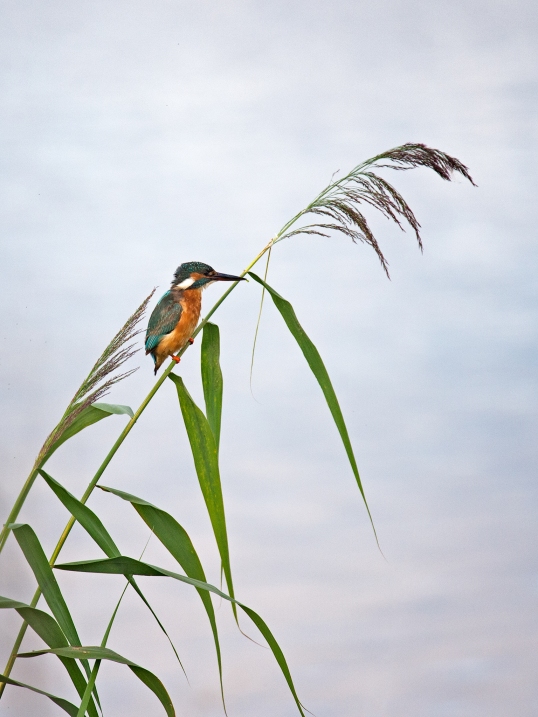
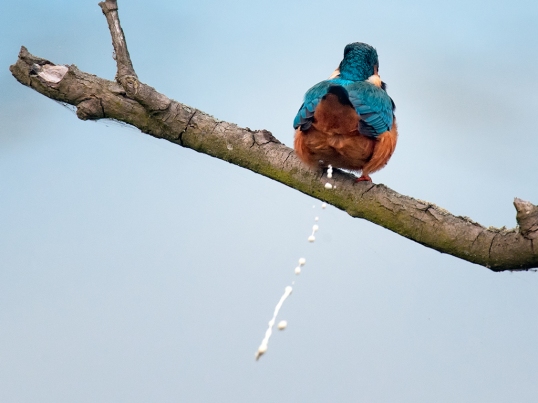
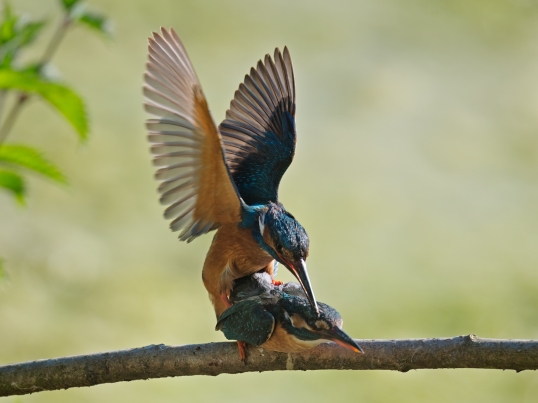
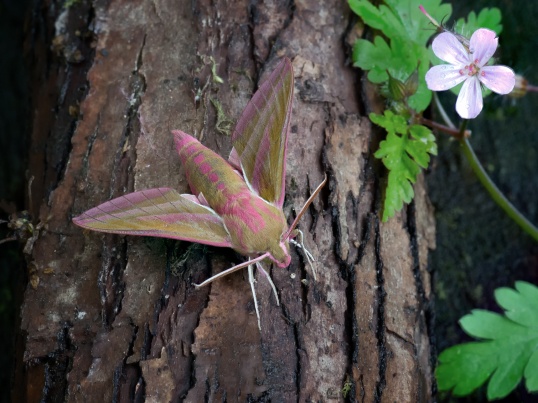 Elephant Hawk Moth – [1/40 sec f16 ISO1600 Nikon D800 105 macro lens]
Elephant Hawk Moth – [1/40 sec f16 ISO1600 Nikon D800 105 macro lens]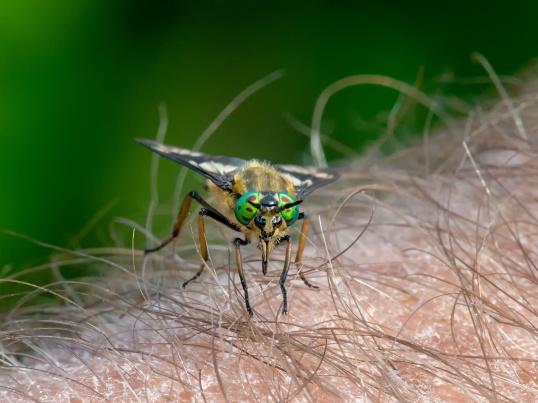 Twin-lobed Deerfly (Chysops relicts) – [1/400 sec f16 ISO 1000 D800 105 macro lens]
Twin-lobed Deerfly (Chysops relicts) – [1/400 sec f16 ISO 1000 D800 105 macro lens]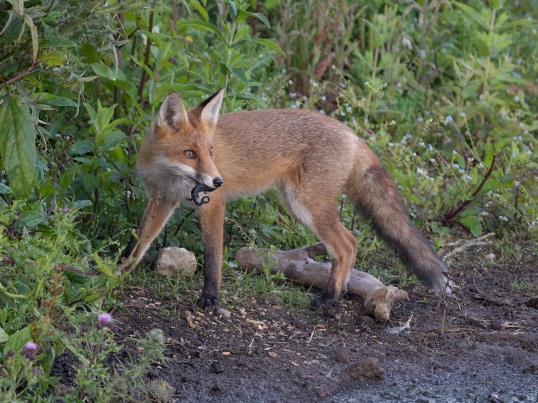 Fox with a Great-crested Newt (1/320 second f 5.6 ISO 1250)
Fox with a Great-crested Newt (1/320 second f 5.6 ISO 1250)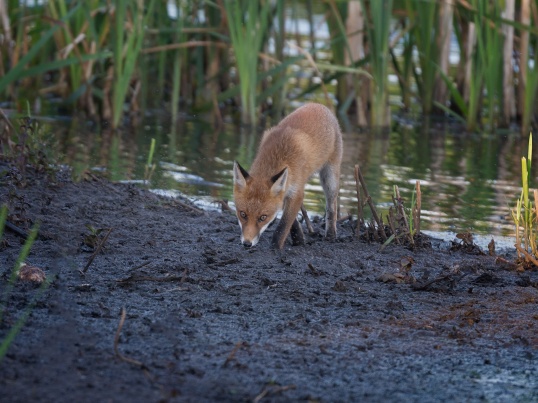 Fox (1/250 second f 5.6 ISO 800)
Fox (1/250 second f 5.6 ISO 800)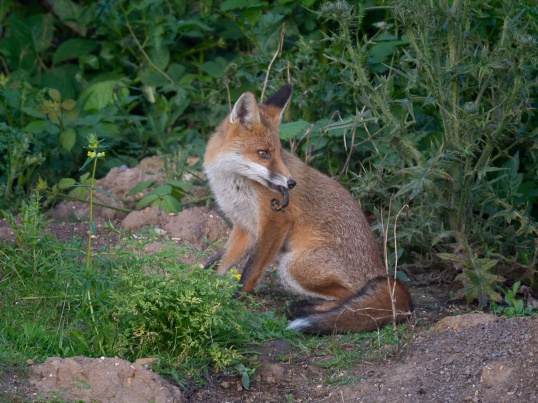 Fox with a Great-crested Newt (1/400 second f 5.6 ISO 1250)
Fox with a Great-crested Newt (1/400 second f 5.6 ISO 1250)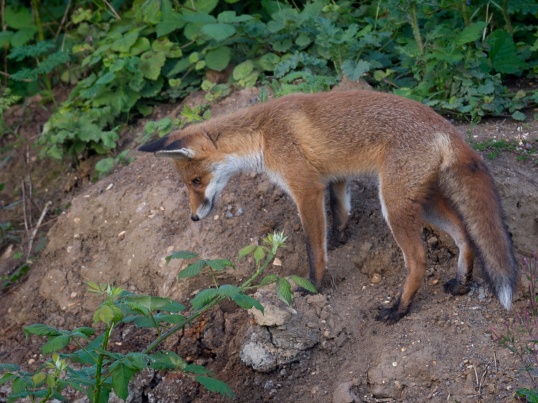 Fox (1/320 second f 5.6 ISO 1250)
Fox (1/320 second f 5.6 ISO 1250)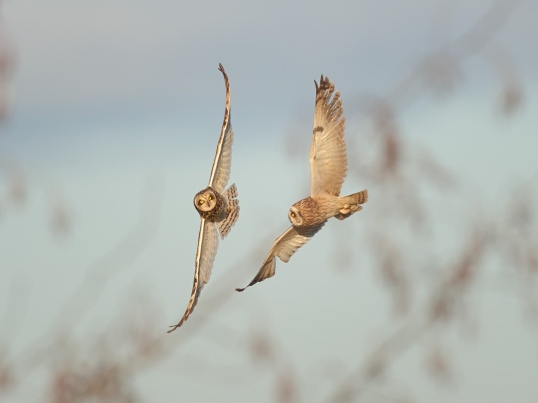 Two Short-eared Owls (1/3200 second @ f 6.7 IS0 1250)
Two Short-eared Owls (1/3200 second @ f 6.7 IS0 1250)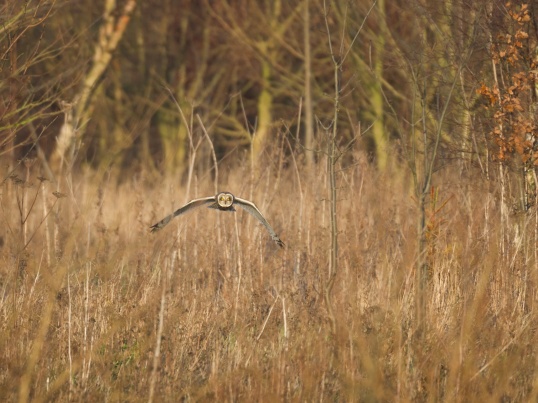
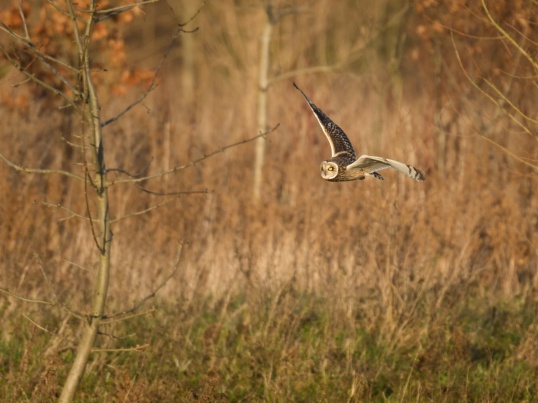
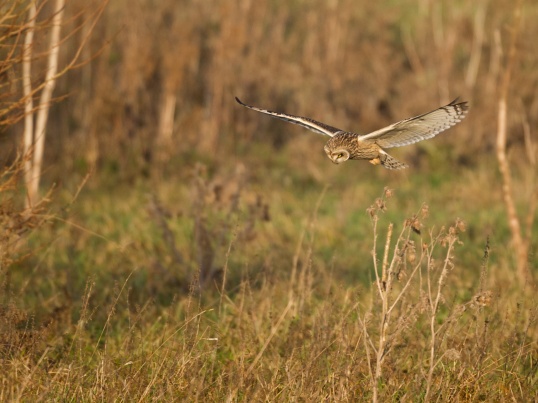
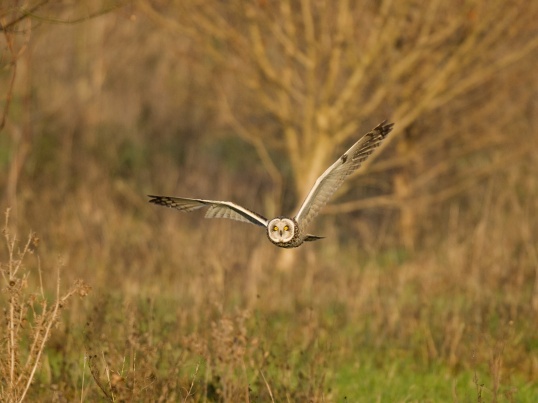
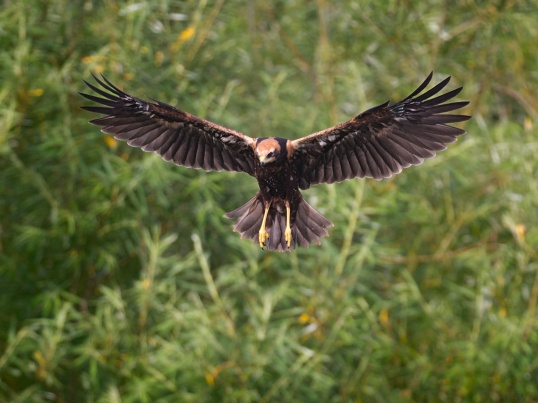 Fledgling Marsh Harrier (13 July 2013) — 1/1600 sec @ f5.6 IS0 800
Fledgling Marsh Harrier (13 July 2013) — 1/1600 sec @ f5.6 IS0 800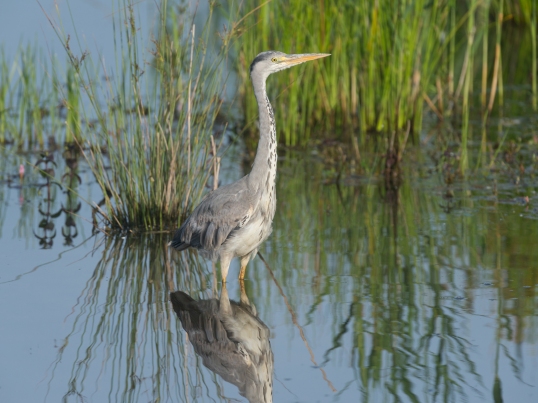 Grey Heron (13 July 2013) — 1/1600 sec @ f5.6 IS0 500
Grey Heron (13 July 2013) — 1/1600 sec @ f5.6 IS0 500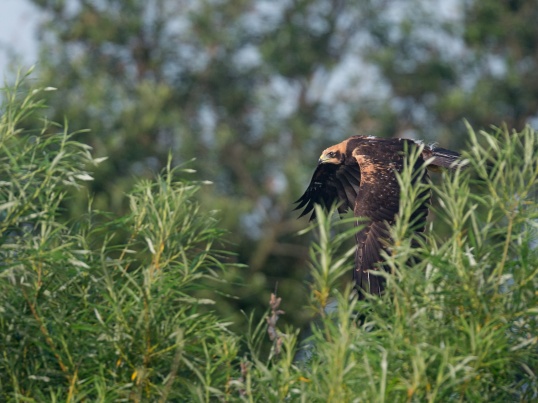 Fledgling Marsh Harrier (13 July 2013) — 1/1600 sec @ f5.6 IS0 500
Fledgling Marsh Harrier (13 July 2013) — 1/1600 sec @ f5.6 IS0 500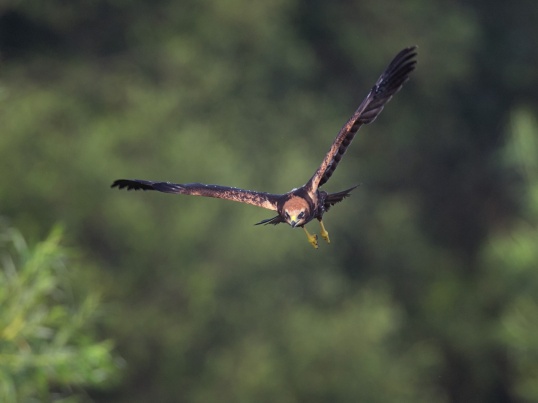 Fledgling Marsh Harrier (13 July 2013) — 1/1600 sec @ f5.6 IS0 500
Fledgling Marsh Harrier (13 July 2013) — 1/1600 sec @ f5.6 IS0 500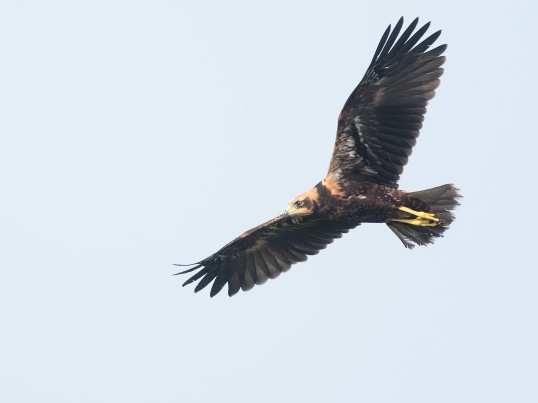 Fledgling Marsh Harrier (13 July 2013) — 1/1600 sec @ f5.6 IS0 800
Fledgling Marsh Harrier (13 July 2013) — 1/1600 sec @ f5.6 IS0 800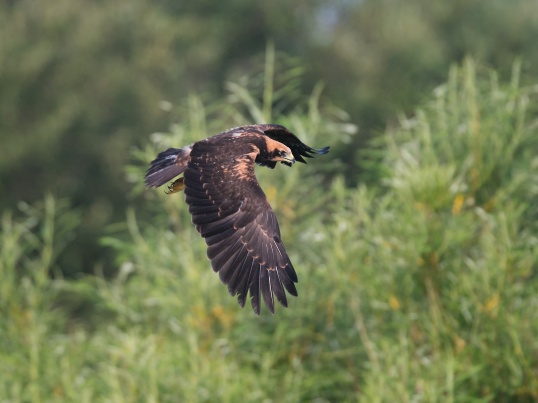 Fledgling Marsh Harrier (13 July 2013) — 1/1600 sec @ f5.6 IS0 500
Fledgling Marsh Harrier (13 July 2013) — 1/1600 sec @ f5.6 IS0 500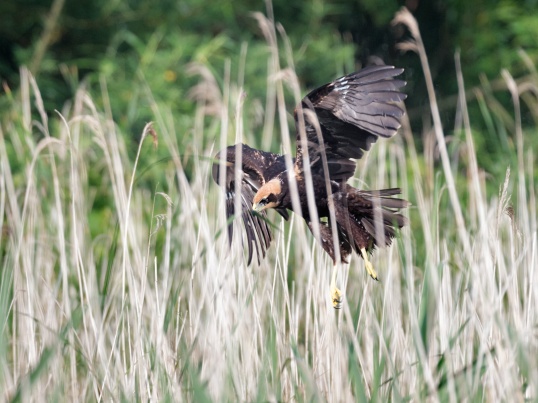
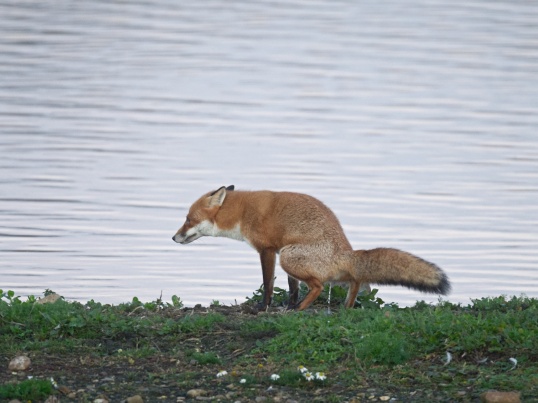 ‘A vixen urinating’
‘A vixen urinating’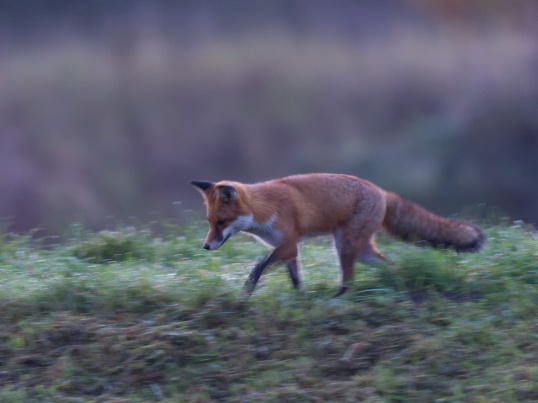
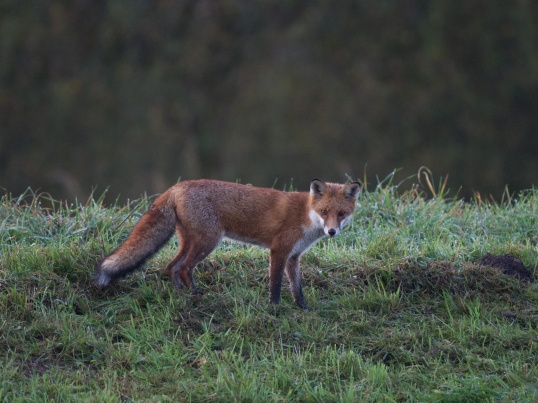
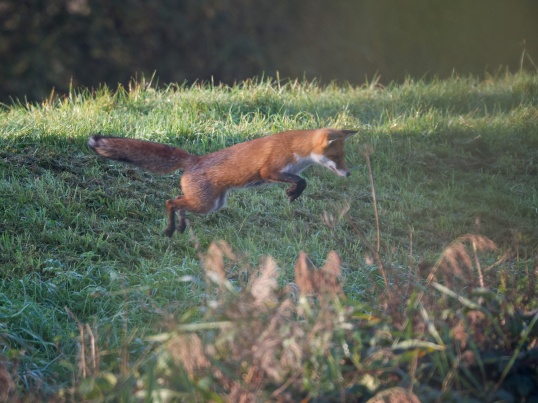
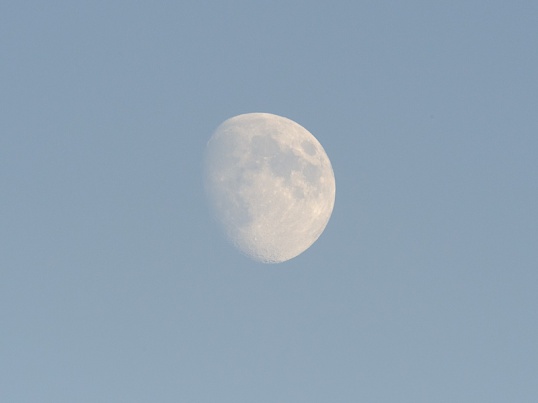
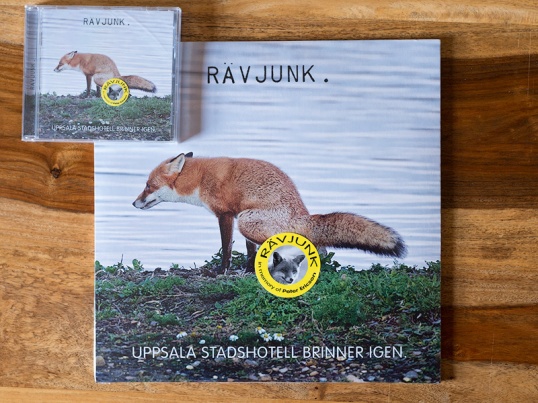
 The flying rabbit © 2013
The flying rabbit © 2013 [for those interested in the exposure details, it was 1/800 second @ f9 ISO 1000]
[for those interested in the exposure details, it was 1/800 second @ f9 ISO 1000]





